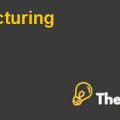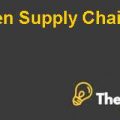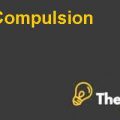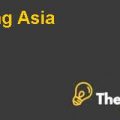
Unsafe for Children: Mattel’s Toy Recalls and Supply Chain Management
Questions Analysis
Question No.1: Why do companies outsource?
There are several reasons for the companies to outsource some of their non-core business functions. Outsourced company will become a strategic partner who will be coordinating with the company. It has many advantages and helps the company to concentrate on their main business rather than distracting their efficiencies in different directions. Nowadays, companies are focusing to give value addition on their core business products. Hence they need to concentrate solely on it, that’s why companies outsource some of their non-core items or their logistics network to any other company by establishing strategic partnership between them.
Sometimes companies outsource because that company have expertise in that business area. For example, NATO and US armed forces have contracted with Maersk Line to outsource their logistics network globally. The reason behind this outsourcing is because providing logistics solution is a core business of Maersk Line and it can do much better comparatively with US armed forces. Outsourcing can help to bring expertise from the outsourced company.
Another reason behind the outsourcing can be the lack of resources in a company, which lead it to outsource to be performed better by an outsourced company. Sometimes companies based in the countries where cost of production is high move some of their functional areas to the low-cost production countries through outsourcing another company mostly for its non-core business.
Outsourcing can help to reduce the excess capital expenses and a company will not need to invest in its non-core business through partnering with other company. Furthermore, it will help a company to improve its overall services on their core areas rather than wasting time and capital on other non-core businesses. In short, outsourcing will lead a company to reduce risks by focusing only on their core functions. Nowadays most companies are trying to improve their main business areas rather than to diversify in other functional activities.
Question No.2: What were the primary causes of Mattel’s recall problem? Were these the result of outsourcing?
There were many issues which became the primary cause of Mattel recalling its goods. There were initially two problems in the Mattel’s toys which were lead excess paint and defective design. According to the recalling volume of Mattel’s goods, most were recalled due to defective design in which small magnets were attached that could become loose. While on the other side, recalling of goods due to excess lead was comparatively low with the defective design. The reason behind the defective design was simply due to the company’s product development process and this had to be focused by them.
Though the units of recalling excess lead paint was comparatively low but it destroyed the company’s image. The reason of excess lead in their products was due to the problem in its supply chain network. Mattel had outsourced Chinese vendors for their non-core business functions, which subcontracted other vendors for paints. Mattel was unaware about the third vendor. Mattel had allowed the vendors to take paints from certified suppliers but many vendors provided false certification and started supplying untested paints which resulted in lead containing toys.
Another problem which they were facing was regarding the pricing strategy. Production cost in US was significantly very high as related with China which saved almost 40 percent of the production cost. The problem was not with outsourcing but it was in their supply chain management. Contracted vendor of Mattel had subcontracted unintentionally with other fake-made documented vendors, which were supplying excess amount of lead in the paints.
Question No. 3: Focusing on the supply chain causes of the recall; what are the factors that lead to suppliers using lead paint. Do you believe that Mattel can control this in future?
The subcontractors were not certified suppliers and had made fake documentation regarding the certification. They started providing excess lead paints and both the immediate vendor as well as Mattel was unaware of it. Lead was cheaper which comparatively resulted in 30 – 60 percent saving as compared to the paint that did not have lead. Chinese vendors already had small profit margins, uncertified suppliers with fake documentation; hence it started using lead in paints to reduce their costs.
Mattel could allow its vendors to subcontract with suppliers, which had to be ISO certified. Still there should be proper testing system to assure the quality of the paint. Vendors should check frequently for the lead containing paints, which can be checked by different lead checking machines. Vendor should verify the certification of..........................
This is just a sample partial case solution. Please place the order on the website to order your own originally done case solution.
In August and September 2007, Mattel made a number of product recalls, totaling more than 20 million toys. Recalls were excessive for lead and magnets that could become loose. All of the recalled toys were made in China. Mattel recalls on the heels of a number of high-profile security problems with Chinese imports, including contaminated pet food and toothpaste, defective tires, and lead-painted toys. Recalls provoked sharp criticism in Mattel and its Chinese supply chain, despite the fact that more than 85 percent of the recalled toys were associated with the design problems (magnets), and not due to improper production (use of lead-based paint). Case provides a basis for discussion of outsourcing and supply chain management. The basic manufacturing process is fairly simple toy, providing a forum to discuss these issues without complications advanced manufacturing or supply chain involved. In this case, supply chain defects, such as the use of lead paint suppliers, can have serious consequences. Supply chain should be designed to prevent these defects. The case allows a discussion of why the company outsourcing, supply chain management and the proper use of inspection and testing. It also provides the opportunity to learn the answer to the crisis, and the relationship between the company and the government. "Hide
by Hau Lee, Mitchell M. Tseng, David W. Hoyt Source: Stanford Graduate School of Business 20 pages. Publication Date: September 15, 2008. Prod. #: GS63-PDF-ENG












